A trained musician, Antonia Nantel devoted much of her life to developing Montreal’s music community, playing a key role in establishing the OSM and the Festivals de Montréal.
OSM History
The OSM’s excellence and vision have been fashioned over the years by its music directors: Montreal-born Wilfrid Pelletier, first Artistic Director; Zubin Mehta, with whom the OSM gave its first concerts in Europe; Charles Dutoit, whose collaboration with the Orchestra lasted close to 25 years; and, since September 2006, Ken Nagano, who inaugurated the Maison symphonique…
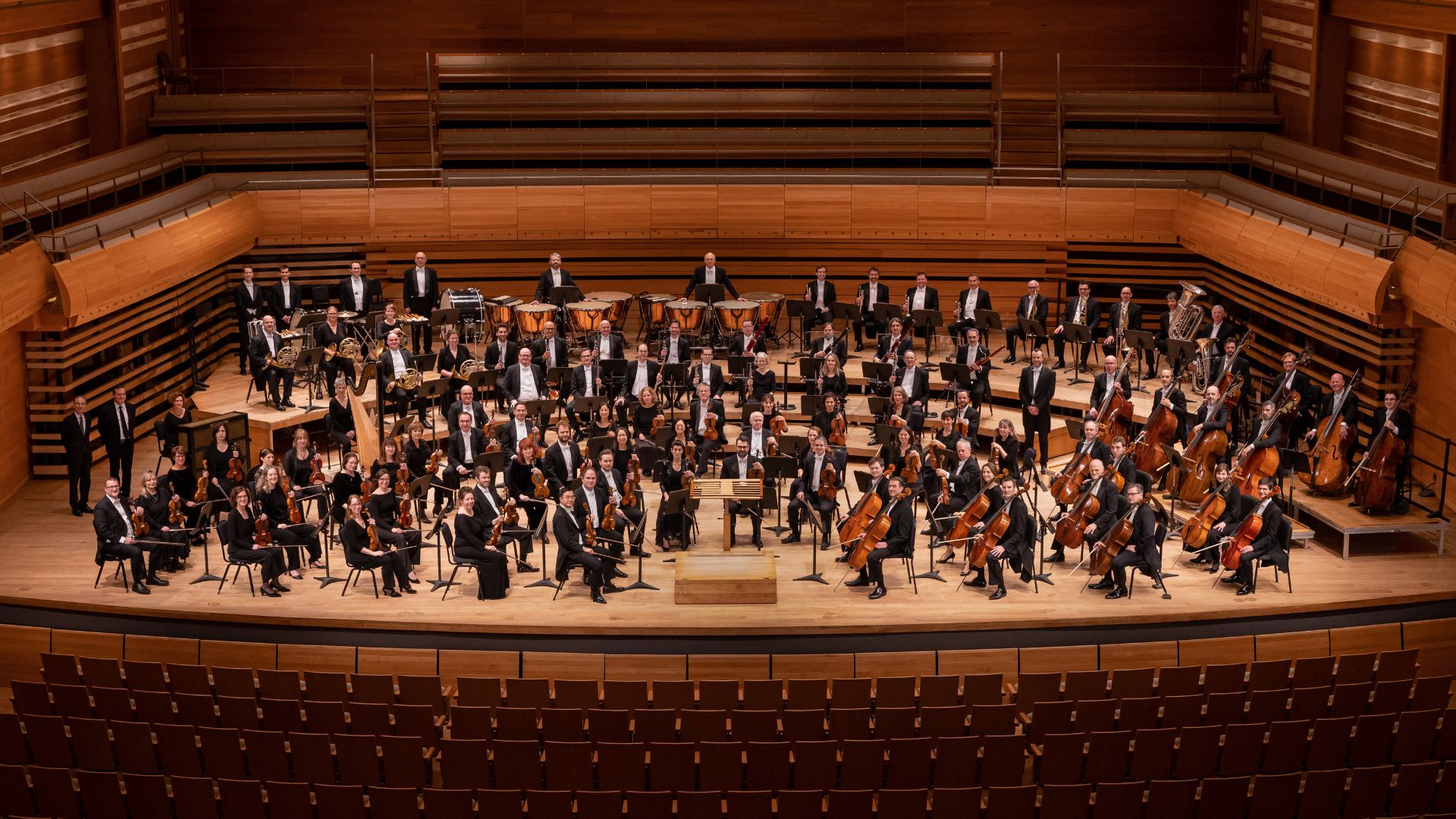
Founding Members
Since the Orchestra’s foundation, generations of musicians have upheld the tradition of excellence to which the Orchestre symphonique de Montréal continues to owe its renown. A succession of masterful conductors has stood at its helm and many illustrious soloists have joined the Orchestra on stage. Beyond giving symphonic performances, since its early days the OSM also has fully and resolutely anchored itself as an institution within the community. Ever ready to venture outside of the concert hall, the Orchestra continues to reach out to the public and to make classical music more widely accessible. Committed to supporting younger generations, the OSM has multiplied initiatives dedicated to young musicians and to local composers.
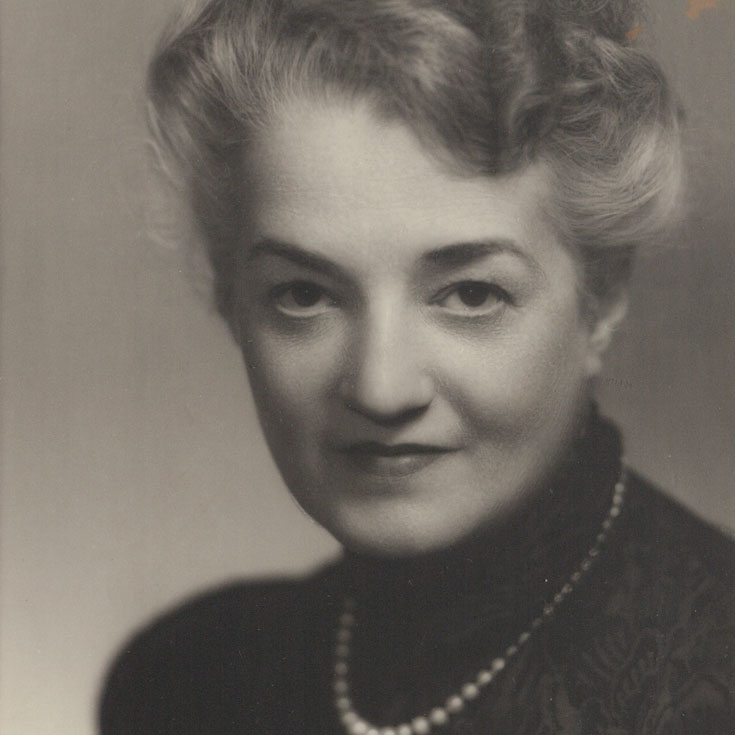
Antonia Nantel
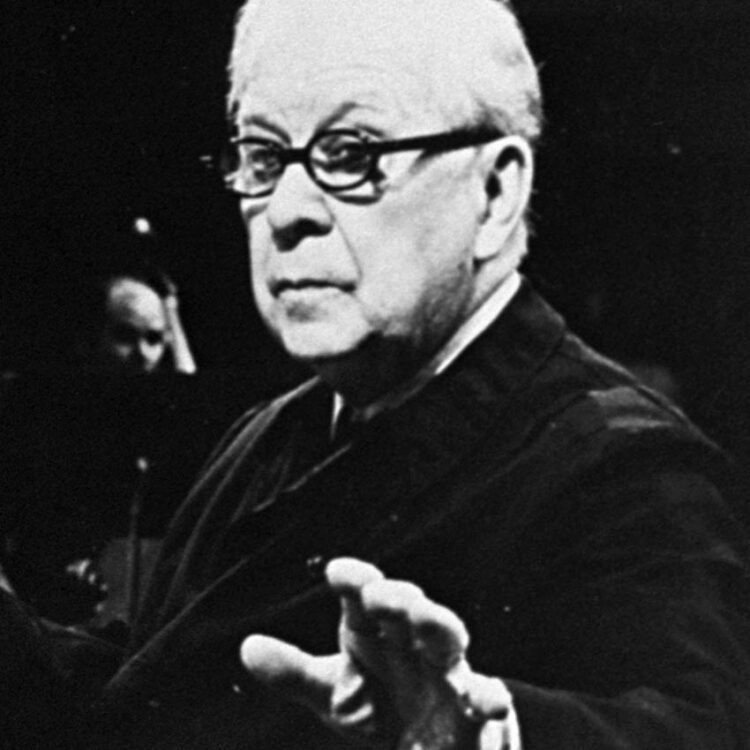
Wilfrid Pelletier
A gifted musician, internationally renowned conductor and eminent educator, throughout his life Wilfrid Pelletier was an advocate for the art of music. Among other institutions, he founded the OSM and the Conservatoire de musique et d’art dramatique du Québec.
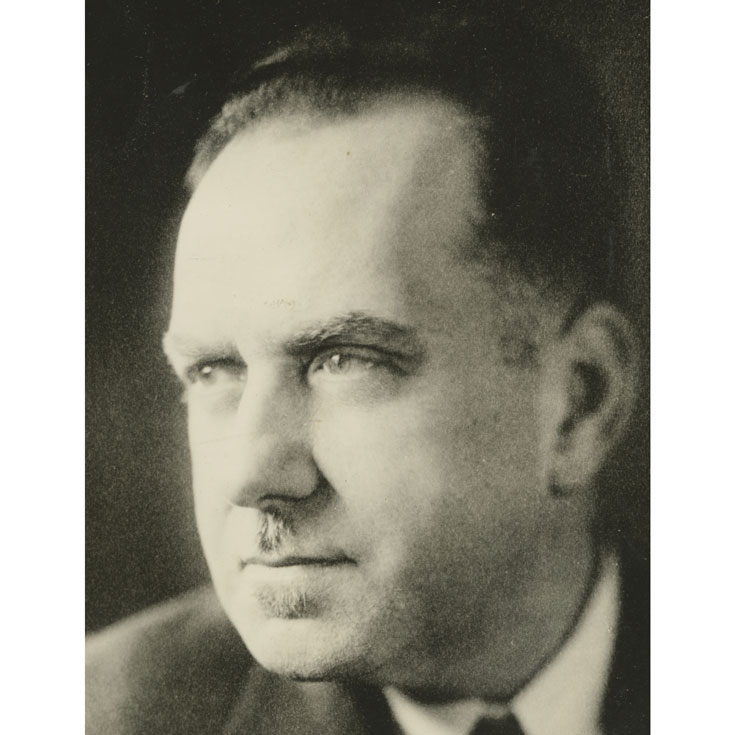
Athanase David
A lawyer, politician, and champion of the arts, Athanase David supported the founding of many leading institutions, including the OSM, the Musée national des Beaux-Arts du Québec, and the Archives nationales du Québec.
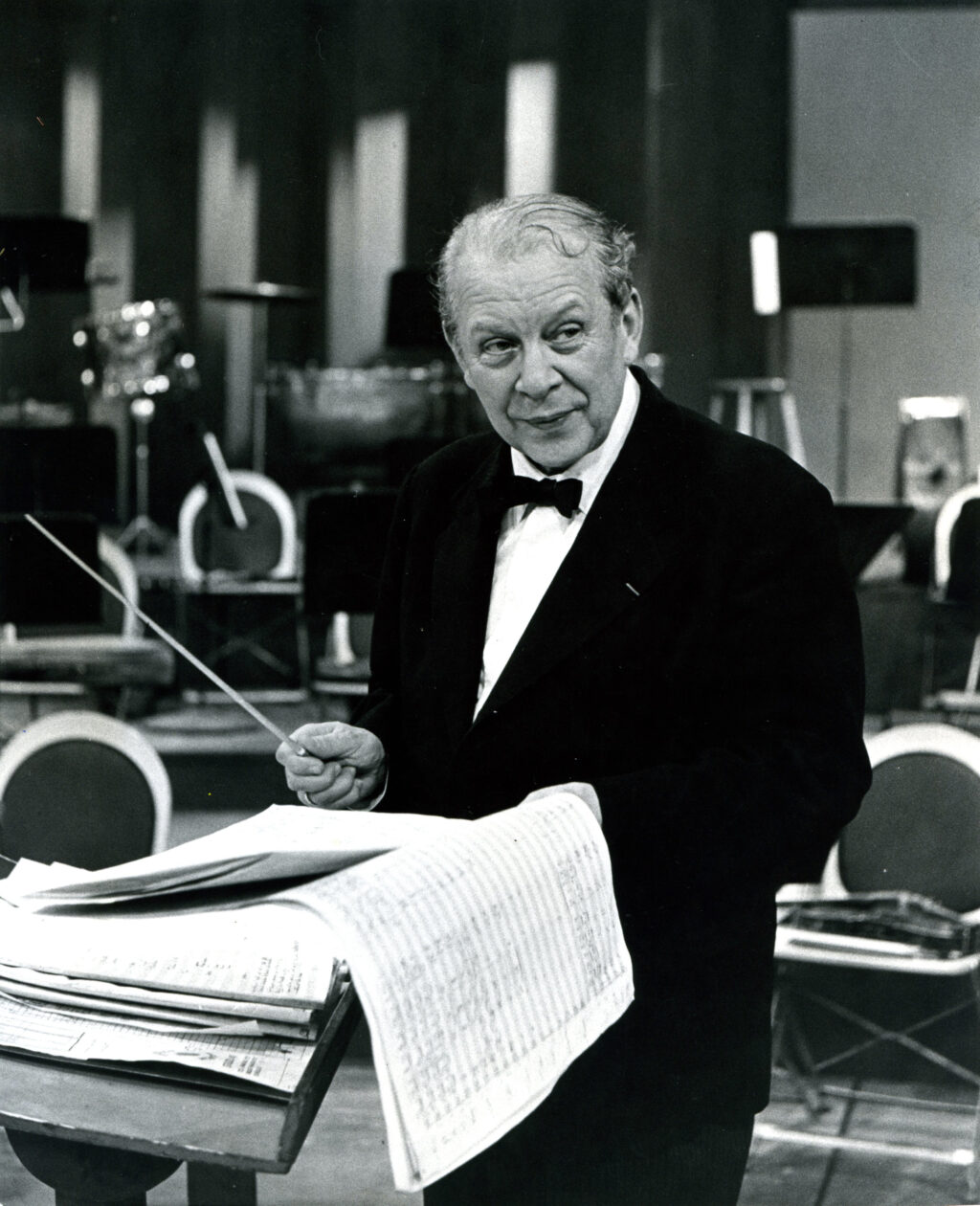
Solid Foundations and a Strong Debut (1934-1941)
On November 16, 1934, Provincial Secretary of Quebec Athanase David announced the creation of the Société des concerts symphoniques de Montréal (CSM), an orchestra serving the province’s French-Canadian public. Mr. David and Mrs. Antonia Nantel both played a key role in the ensemble’s founding and quickly strengthened its international relations, especially with the United States and France. Its first concert, conducted by Rosario Bourdon, was given at the Auditorium Le Plateau/Plateau Hall on January 14, 1935, in an atmosphere of euphoria. A succession of conductors led the ensemble during its first season, including Wilfrid Pelletier who was associated at the time with the Metropolitan Opera but whom Athanase David and Antonia Nantel convinced to come to Montreal. Pelletier became the CSM’s first Artistic Director starting in 1935. OSM Conductor Emeritus and visionary, he laid down a solid foundation and concept that make the OSM what it is today. Among the great innovations introduced during this period, the following stand out:
November 1935: Inauguration of the “Matinées symphoniques pour la jeunesse,” concerts adapted for young people combining performance, repertoire guidance and an introduction to various instruments of the symphony. The formula was a novelty at the time, subsequently emulated by the New York Philharmonic while being enthusiastically perpetuated at the OSM.
1936: First competition for composers, launched by patron of the arts Jean C. Lallemand.
June 1936: First edition of the Montreal Festivals, an initiative aimed at broadening audiences. Montreal Festivals brought together CSM musicians, soloists from the Metropolitan Opera, the Cathedral Singers and Disciples de Massenet choirs to perform massive works such as Bach’s Passions or Beethoven’s Missa Solemnis and Ninth Symphony…
July 1938: The beginning of a long tradition of free concerts at the Chalet atop Mount Royal.
1940: Inauguration of the Prix Archambault, the direct forerunner of the OSM Competition. See the complete list of winners.
On October 15, 1936, the weekly newspaper L’Avenir du Nord reported that the Concerts symphoniques de Montréal (CSM)’s Board of Directors had officially appointed Antonia Nantel, Athanase David and Wilfrid Pelletier as lifetime founding members of the CSM. Artistically, the OSM’s early years were decisive. The will to exclusively highlight Francophone musicians and conductors gradually gave way to a broader concept. The dedication and ingenuity of Executive Director Pierre Béique yielded effective results in the 1940–1941 season, attracting great soloists such as Arthur Rubinstein, Claudio Arrau and Nathan Milstein, as well as conductors Sir Thomas Beecham, Sir Ernest MacMillan and a young Belgian acclaimed for his vigorous yet meticulous conducting: Désiré Defauw.
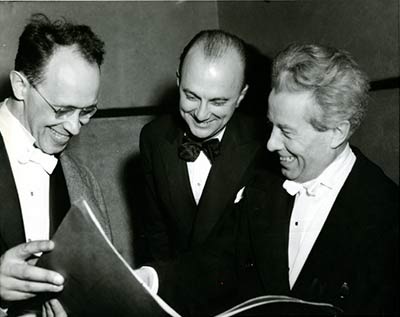
The OSM: A New North American Attraction (1941-1961)
After fleeing his war-torn homeland, Désiré Defauw was appointed Music Director beginning in the 1941–1942, season after a promising start with the CSM. Wilfrid Pelletier handed over the baton to Defauw to fulfill his new appointment as Director of the Conservatoire de musique de Montréal, while also maintaining key functions at the Metropolitan Opera. Pelletier would often return as Guest Conductor of the CSM. During Defauw’s time at the helm of the Orchestra, some important milestones were accomplished:
October 9, 1941: At the initiative of Pierre Béique, Bruno Walter guest-conducted a benefit concert in support of the war effort. The members of three orchestras — the CSM, Montreal Orchestra and Montreal Women’s Symphony Orchestra founded in 1940 by Ethel Stark — pooled their resources for the event. The programme included works by Brahms, Beethoven and Wagner.
May 1942: A concert to mark the City of Montreal’s 300th anniversary. Renowned pianist Rudolf Serkin performed two piano concertos to enthusiastic reception. Serkin was to nurture a warm relationship with the Orchestra and with Montreal audiences over the years.
A tireless ambassador for the Orchestra, Pierre Béique multiplied the OSM’s engagements to perform abroad and drew many brilliant international soloists and conductors to the Montreal stage, many of whom were living in exile during the war. In a few short years, he brought to Montreal Bruno Walter, Igor Stravinsky, Rafael Kubelik, George Szell, Leonard Bernstein, George Enesco, Charles Munch, Leopold Stokowski and Otto Klemperer. Klemperer was invited to conduct the Orchestra during several consecutive seasons, profoundly influencing the course of its artistic journey.
Concurrently, Désiré Defauw, triumphant in the first half of the 1940s, saw his popularity decrease in Montreal and gradually resumed his European engagements. In 1944, the Orchestra lost a considerable number of musicians, including Concertmaster Maurice Onderet who joined the orchestra of France-Film, which offered better conditions. This caused the CSM to reorganize and, despite wartime constraints, it succeeded in developing artistically. It continued to perform the Romantic repertoire while exploring contemporary works (Shostakovich, Stravinsky) and Canadian works (Claude Champagne, Jean Vallerand, Alexander Brott, who also served as Concertmaster of the CSM beginning in 1944).
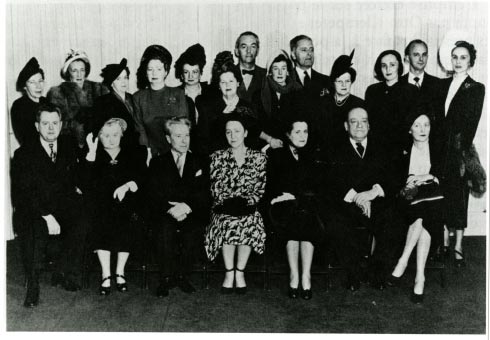
The end of the war would expose the need for a solid organizational infrastructure. Beginning in 1948, a women’s standing committee was formed, providing continuous and indispensable support to the Orchestra in the form of subscription campaigns, luncheons, balls and other social activities to benefit the CSM. The Orchestra also enjoyed the support of several other committees formed over the years, including the Youth Committee in 1955. Through these means, the Orchestra became increasingly anchored in the community, committing itself in turn to supporting local artists. In February 1955, Russian conductor Igor Markevitch made his North American debut, leaving a lasting impression. He returned in 1956–1957 to conduct a CSM performance of The Rite of Spring, which no Canadian orchestra had yet performed. It was a stunning success and marked no less than a contemporary revival within the Orchestra’s repertoire. Markevitch became Music Director in 1957.
1954: The CSM changed its name to Orchestre symphonique de Montréal/Montreal Symphony Orchestra (OSM)1958: The OSM Youth Committee and Igor Markevitch began commissioning Canadian works on an annual basis. The OSM was the first Canadian orchestra to undertake such an initiative. Its first commission was awarded to Toronto composer Harry Somers, whose Fantasia for Orchestra was premiered by the OSM under Markevitch.
Autumn 1959: With the generous support of the daily newspaper The Montreal Star and its President John G. McConnell, the OSM introduced a concert series at the Montreal Forum, at the cost of one dollar per single admission, in response to popular demand. Markevitch and the OSM gave their first performance of the series with soloists Maureen Forrester and Richard Verreau.
The late 1950s ushered in a new era in the Orchestra’s history. As the construction of a new concert hall was beginning at Place des Arts, the OSM decided to offer musicians annual contracts instead of the concert-based ones in effect and enriched the programming to add 8 special edition concerts to its season of 12 subscription concerts. Meanwhile, the series of four concerts at one dollar apiece at the Montreal Forum (replaced today by the Bell Centre) began in the fall of 1959 and attracted unprecedented numbers to the OSM. When Markevitch’s health suffered a rapid decline in 1960, Pierre Béique was faced with finding substitutes. Among them, a youthful 24-year-old Indian conductor, recommended by Charles Munch and Josef Krips, took to the podium at an OSM performance on October 25, 1960. His conducting of Berlioz’s Symphonie fantastique took Montreal by storm, and Montrealers enthusiastically embraced this rising star. Zubin Mehta became Artistic Director of the OSM the following season.
The OSM Flourishes and Gains Momentum Despite Challenges (1961-1978)
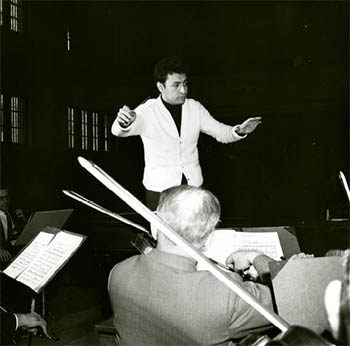
Zubin Mehta’s first season was packed with activities and commitments: conducting 8 of the 12 subscription concerts himself and performing with soloists Alfred Brendel, Marek Jablonski, Yehudi Menuhin and Pierrette Alarie, in addition to working with the young conductor Seiji Ozawa, who had come to hone his artistry in Montreal. The season remains of historical significance for the OSM and its audiences, for it paved the way for the Orchestra’s European journey in May 1963, the first tour in its history and in the history of Canadian orchestras. Its performances in Moscow, Leningrad, Kiev, Vienna and Paris with conductors Zubin Mehta and Jacques Beaudry, and with soloists Teresa Stratas and Ronald Turini were a resounding success, ushering in a long tradition of international tours for the OSM.
Another landmark in the Orchestra’s history was the inauguration of the Grande Salle de la Place des Arts (renamed Salle Wilfrid-Pelletier in 1966), which was celebrated from September 21 to October 5, 1963, with five memorable concerts featuring guest orchestras (London, Boston) and renowned conductors and soloists (Charles Munch, Georges Prêtre, Rudolf Serkin, Yehudi Menuhin). Wilfrid Pelletier and Zubin Mehta shared the podium for this first concert, respectively symbolizing continuity and renewal.
The acoustics of the new hall were considered as exceptional for artistic purposes, and this would encourage the OSM to broaden its activities in a series of opera productions. Throughout the seasons, audiences were treated to such classics as Tosca, Carmen, La traviata and Aida and regaled by the voices of Joan Sutherland, Leontyne Price, Richard Verreau, Jon Vickers, Shirley Verrett and Joseph Rouleau, among others. Zubin Mehta, whose continuing international celebrity took him increasingly far afield of Montreal, stepped down as Music Director after Expo ’67, with a poignant passing of the baton that brought together in the same concert the Orchestre symphonique de Montréal and the Los Angeles Philharmonic, which Mehta went on to serve as Music Director until 1978. He was succeeded in Montreal by German conductor Franz-Paul Decker, a renowned pedagogue who worked tirelessly at maintaining the Orchestra’s stature. Decker was given the opportunity of demonstrating the breadth of this work at Expo ’70 in Osaka, Japan, where the OSM performed alongside many illustrious European ensembles to high acclaim. The year 1970 was marked by the departure of Pierre Béique, (honoured today as General Director Emeritus), whose life’s work was dedicated to the OSM and whose contribution was essential in shaping the Orchestra we know today.
1970: Expo ‘70 in Osaka. The OSM under Franz-Paul Decker with soloists Maureen Forrester and Philippe Entremont performed three different programmes of works by Mahler, Prokofiev, Ravel, Bruckner and Canadians François Morel and Raymond Murray Schafer.
1970: Celebration of the bicentenary year of Beethoven’s birth
1970–1981: Conductor and pedagogue Mario Duschenes perpetuates Wilfrid Pelletier’s tradition by becoming conductor of the Youth Matinees.
1973–1974: the OSM faced financial crisis that threatened its very survival. After several weeks of deliberations, the OSM regained stable ground once again, thanks to public subsidies and private donations.
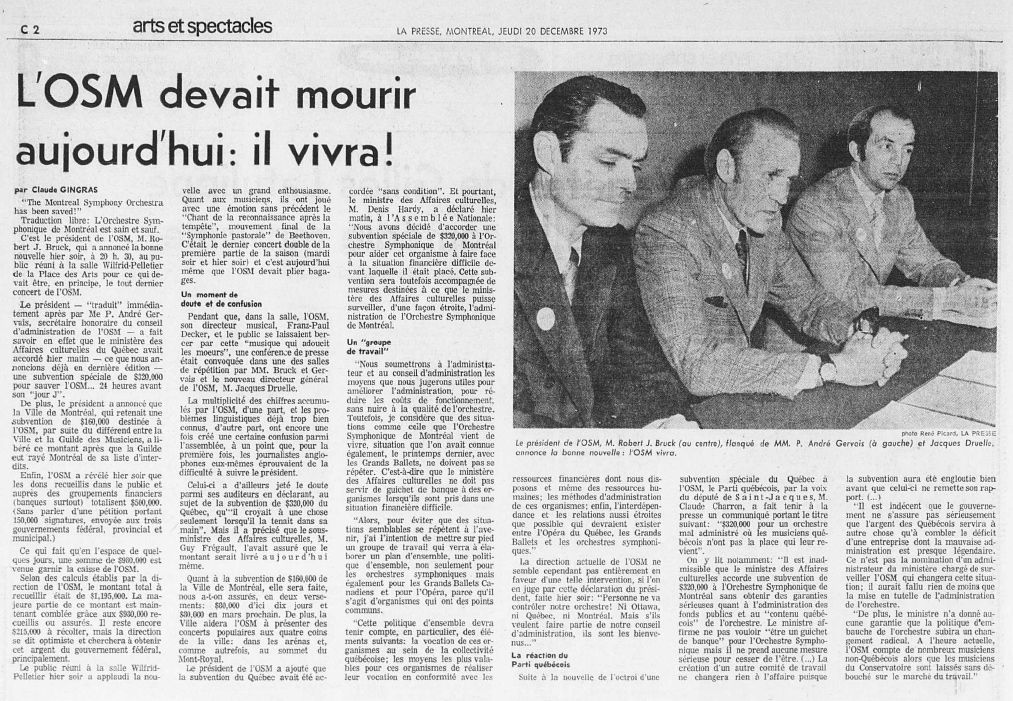
The financial crisis of the winter of 1973 was unprecedented in the history of the Orchestra, which was compelled to announce a cessation of its activities due to an excessive deficit. After 20 long days of discussions and concerns relayed in the media, the OSM restored its finances thanks to public subsidies, subscriptions and private donations, enabling the season to resume in January. A few months later, the OSM celebrated its 40th anniversary, with famous guest flutist Jean-Pierre Rampal. The 1975–1976 season marked the arrival of a new Artistic Director, Spanish conductor Rafael Frühbeck de Burgos, who added several Spanish works to the OSM’s repertoire and enjoyed the privilege of conducting the Orchestra for its first concert at Carnegie Hall on May 17, 1976, flanked by soloist Maureen Forrester. In November 1976, in the wake of disagreement with the Musicians’ Committee, Frühbeck de Burgos resigned. Several conductors were invited to stand in for him, among them Charles Dutoit, a 40-year-old Swiss conductor unknown to the Montreal public. Dutoit was to herald a new chapter in the history of the Orchestra.
Inaugural concert of Place des Arts on September 21, 1963
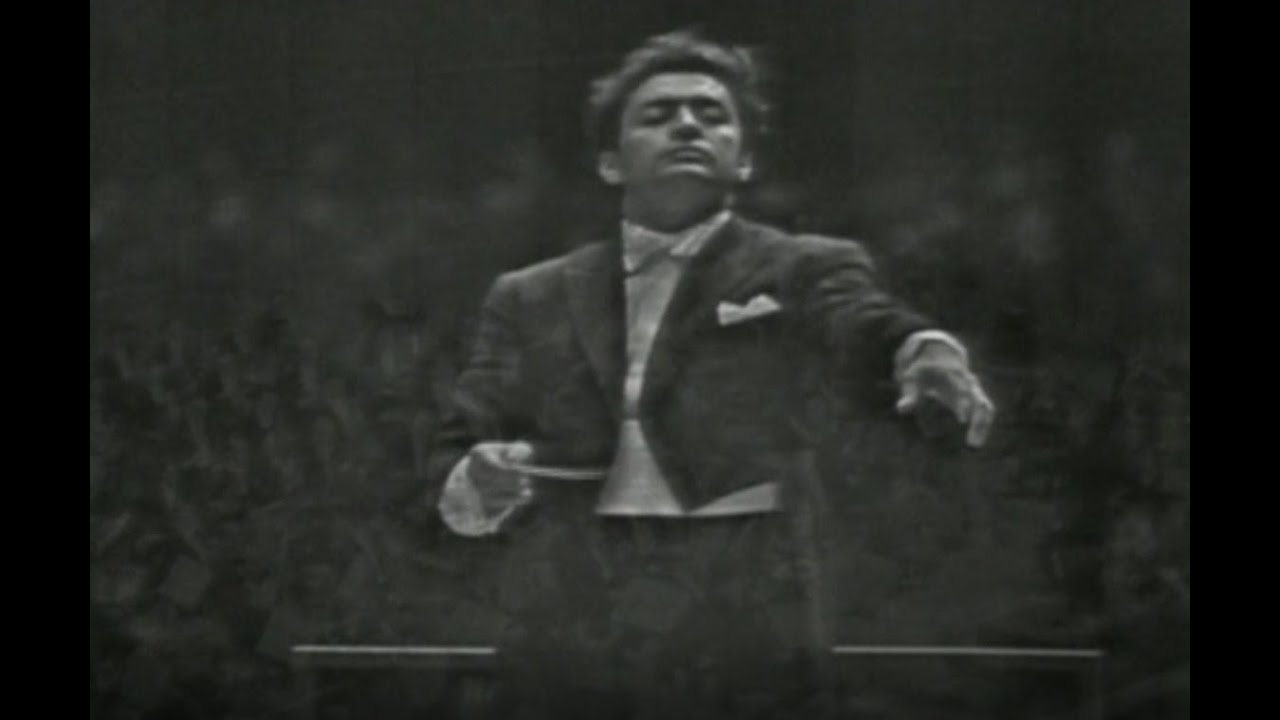
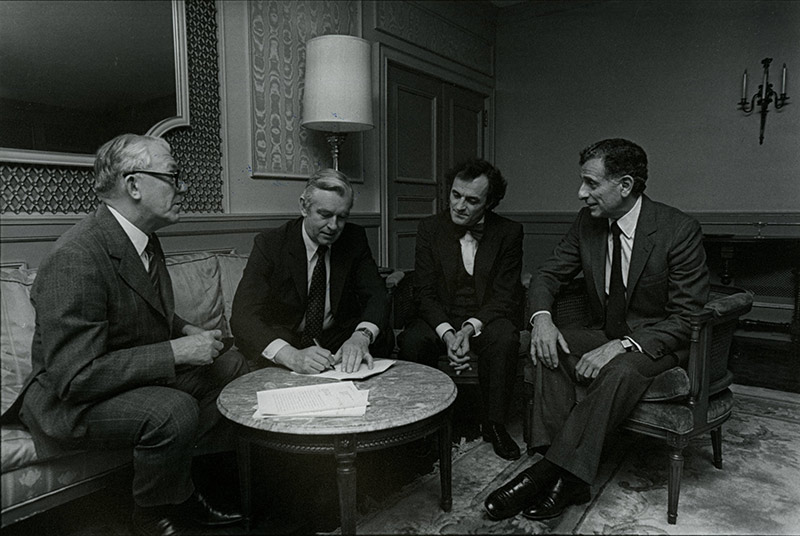
International Stature (1980-2002)
In 1980, the OSM began a new chapter in its history when it signed a major recording contract with the Decca label. Under the direction of Charles Dutoit, a leading specialist of the French and Russian repertoires, in 1980 it began recording its first digital album—a rare occurrence at the time—at the Église de Saint-Eustache.
The album of Ravel’s Daphnis et Chloé, released first on vinyl (1981), and then on CD (1984), garnered numerous international distinctions. The OSM’s subsequent recording of Ravel’s Boléro reached platinum sales in Canada, while Les Troyens won a Grammy. Following these triumphs, the OSM went on to record at a frequency which only a few other orchestras in the world could sustain, and embarked on a string of international tours. Even with these new heights of international acclaim, the OSM continued to sustain and cultivate its loyal home base with annual summer concerts in the parks that would feature the ever popular Boléro as an encore.
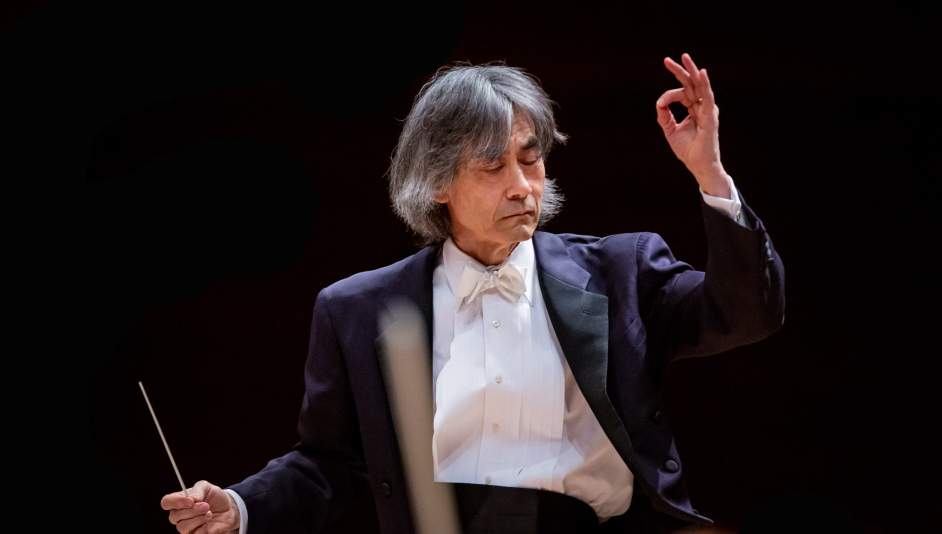
At the heart of the community (2002-2020)
After an interim period under the excellent leadership of Jacques Lacombe, Kent Nagano was appointed at the helm of the OSM. The Orchestra resumed international tours after six years without them. Then, in 2011, the OSM inaugurated its new concert hall, the Maison symphonique, whose acoustics finally met the real needs of an orchestra of its stature. After this important event, three years later the Grand Orgue Pierre-Béique was unveiled to the music-loving public. The Orchestra began its first live webcasts and released a recording of L’Aiglon, which earned the coveted Diapason d’or. Countless achievements for which Kent Nagano and the OSM can pride themselves include two concert tours in Nunavik in 2008 and 2018, the launch of the La musique aux enfants initiative, the creation of the Classical Spree summer festival, and in 2018, the OSM’s first appearance at the prestigious Salzburg Festival.
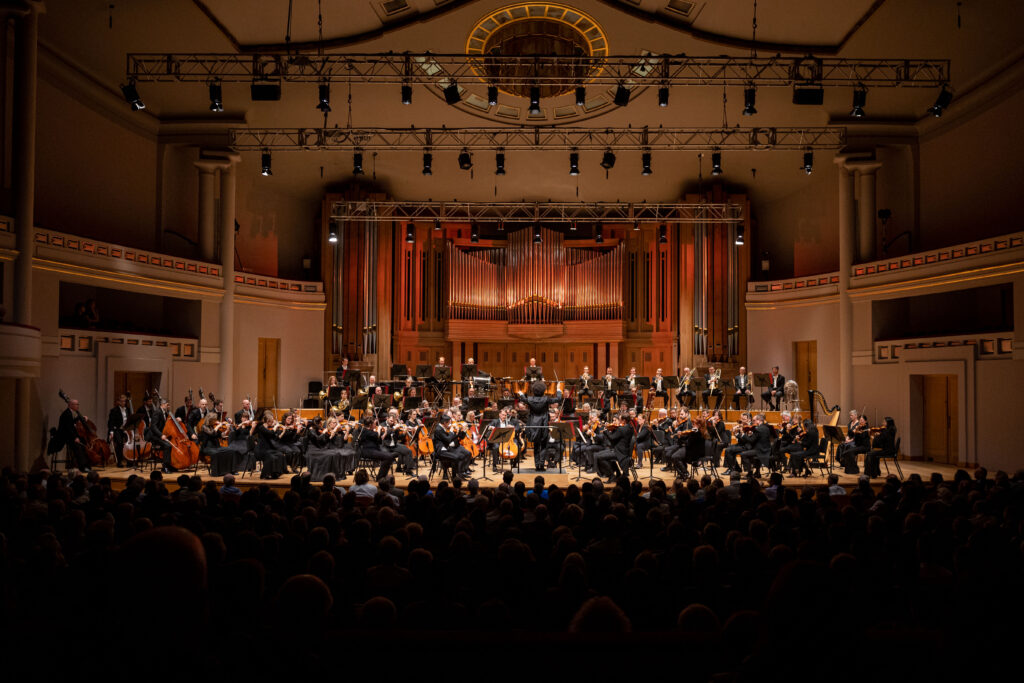
Rafael Payare et les musicien.nes de l’OSM au Palais des Beaux-Arts, Bruxelles le 27 octobre 2022 ©AntoineSaito
Since 2021
Coming soon
